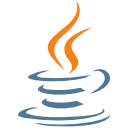Top Nim (programming language) Alternatives for Your Next Project
Nim is a fascinating and powerful statically typed, imperative programming language known for its high performance, Python-like readability, and ability to compile to C, C++, or JavaScript. While Nim offers a unique blend of features and runtime efficiency, developers often look for alternatives based on specific project requirements, team familiarity, or ecosystem preferences. Whether you need broader community support, more extensive libraries, or a different paradigm, exploring Nim (programming language) alternatives can open up new possibilities.
Excellent Nim (programming language) Alternatives
If you're considering a move from Nim or simply exploring other programming languages that offer similar capabilities or different strengths, here are some top contenders worth evaluating:

Python
Python is an interpreted, interactive, object-oriented, and extensible programming language. It's a fantastic Nim (programming language) alternative due to its extraordinary combination of clarity and versatility, making it highly readable (similar to Nim's indent-based syntax). As a Free, Open Source language, it runs on Mac, Windows, Linux, and many other platforms. Key features include high-level programming, object-oriented capabilities, dynamic typing, and garbage collection.

Java
Java is a general-purpose, concurrent, class-based, object-oriented programming language designed for minimal implementation dependencies. It's a strong Nim (programming language) alternative, particularly for enterprise-level applications, given its robust cross-platform capabilities (Windows, macOS, Linux, Android, Web) and strong object-oriented paradigm. Java is Free Personal and Open Source, and features include garbage collection and X86/x64 compatibility.

C (programming language)
C is one of the most widely used general-purpose programming languages of all time. As a Nim (programming language) alternative, C excels in systems programming, offering manual memory management and direct hardware interaction, which Nim also aims for in terms of efficiency. It's Free and Open Source, available across Mac, Windows, Linux, Android, and iPhone, and known for working at the kernel level and being a compiled language.

C++
C++ is a statically typed, multi-paradigm, compiled, and powerful general-purpose programming language. Similar to Nim's performance focus, C++ offers exceptional control and speed, making it an excellent Nim (programming language) alternative for performance-critical applications. It's Free and Open Source, supported on Mac, Windows, Linux, and BSD, and features compiled language capabilities and strong systems programming support.

Ruby
Ruby is a dynamic, reflective, object-oriented programming language known for its elegance and developer-friendliness. While Nim prioritizes performance, Ruby offers an alternative focusing on developer happiness and productivity, making it a viable Nim (programming language) alternative for web development and scripting. It's Free and Open Source, runs on Mac, Windows, Linux, and BSD, and features dynamic typing and a robust package manager.

C#
C# is a multi-paradigm programming language encompassing strong typing, imperative, declarative, functional, generic, and object-oriented features. As a compiled language and a strong object-oriented choice, C# can serve as an excellent Nim (programming language) alternative, especially for Windows development and game development with Unity. It's Free and Open Source, available on Mac, Windows, Linux, and BSD.

Go (Programming Language)
Go is an open-source programming language designed to make it easy to build simple, reliable, and efficient software. With its focus on concurrency and performance, Go is a compelling Nim (programming language) alternative, particularly for backend services and networked applications. It's Free and Open Source, running on Mac, Windows, Linux, and BSD, and features compiled code, object-oriented capabilities, and excellent readability.

R (programming language)
R is a free software environment for statistical computing and graphics. While Nim is a general-purpose language, R is a highly specialized Nim (programming language) alternative for data analysis, statistical modeling, and visualization. It's Free and Open Source, available on Mac, Windows, Linux, and BSD, and features like automatic data loading and data mining make it ideal for specific scientific tasks.

Rust
Rust is a systems programming language that runs blazingly fast, prevents almost all crashes, and eliminates data races. Offering similar low-level control and performance as Nim (programming language) but with a strong emphasis on memory safety without garbage collection, Rust is an excellent alternative for critical systems development. It's Free and Open Source, available on Mac, Windows, Linux, and BSD, and features typesafe coding, a robust package manager, and static typing.

Lua
Lua is a powerful, fast, lightweight, and embeddable scripting language. As a Nim (programming language) alternative, Lua excels in areas requiring a small footprint and high performance, such as game development, embedded systems, and extending applications. It's Free and Open Source, available on Mac, Windows, Linux, Android, iPhone, and many other platforms, and is highly valued for its scripting and configuration capabilities.
Each of these Nim (programming language) alternatives brings its own set of advantages in terms of community, ecosystem, performance, or specific use cases. Carefully consider your project's needs, your team's expertise, and the long-term maintainability to choose the best fit for your development journey.